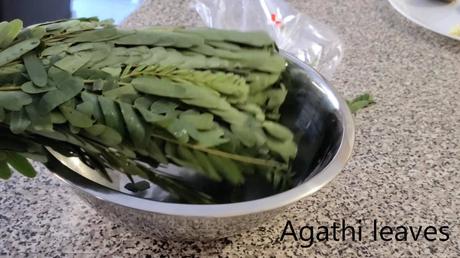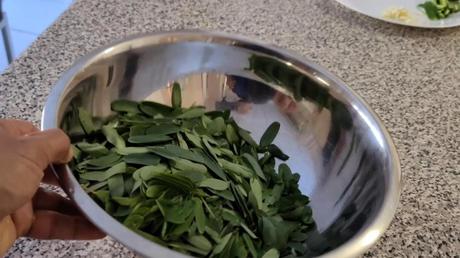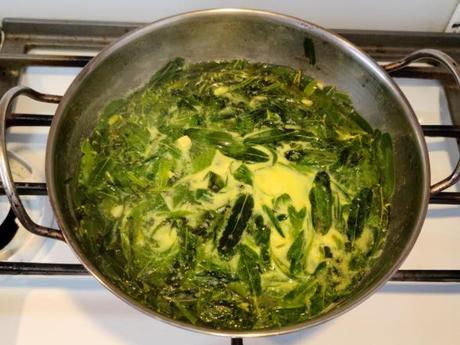
I was recently watching a cooking show episode of a well-known, since deceased, US chef. His comments on the merits of bitter taste made me think how different Asian cultures approach this taste compared to western cooking.
Bill Briwa, in his video, said that bitter taste in a plant-based diet oftentimes is poisonous, as if there is a built-in warning device to tell us when we are eating this flavored food there might some risk of being (food?) poisoned.
In other words, "bitter is bad".
This is in stark contrast to Asian cooking where the bitter taste plays a major role, however unpleasant its taste might be to the taste buds.
Bitter Taste in Indian Cuisine/Medicine
In Indian cooking, traditionally, there are six tastes - pungent, salty, sour, bitter, astringent, and sweet. We don't have the umami flavor.

From the time I started enjoying food, I had heard about the need for a "balanced diet", particularly for lunch (perhaps because lunch was the most important of the meals?). There is rice - as the centerpiece of the meal - and then a few curries, including something that is bitter. The sweet flavor, of course, comes from the dessert.
We were told that bitter flavor "purifies blood" and can contain diabetes.
According to ayurveda, the medicinal system with its root in India, bitter foods help detoxify the body, are anti-inflammatory, and help maintain a healthy liver (whose vitality is critical for managing diabetes, or lack of it). Check this website for more information.
Bitter Taste in Chinese Cuisine/Medicine
Bitter flavor plays no insignificant role in Chinese cuisine either. The Chinese cuisine has five flavors - just like the Indian tastes, but without the astringent flavor.
And like ayurveda, traditional Chinese medicine (TCM) also considers bitter taste an important factor in maintaining a balance and to rectify certain imbalances.
Bitter is good for the heart and the stomach, according to this Chinese website. https://www.chinahighlights.com/travelguide/chinese-food/food-flavors.htm.
One important aspect to note is that both Chinese and Indian cuisines are influenced by their respective medicinal traditions - TCM and ayurveda.
There have been, in fact, many studies conducted into the medicinal properties of bitter tasting vegetables, such as bitter gourd or bitter melon. The studies concentrated on various properties, including anti-inflammatory, diabetes controlling/inhibiting and cancer prevention.
Here are links to two studies:
- Studying Effects of Bitter Melon in Diabetes Management
- Studying Effects of Bitter Melon in Cancer Prevention
Back to cooking, Like in Indian cooking, bitter dishes are not served alone in the Chinese tradition as well, but they come in combinations. In India bitter tasting vegetables are cooked as a separate dish but served along with other, non bitter, dishes, or mixed up with other vegetables in the same dish (like bitter melon and tomatoes) whereas in Chinese cuisine, it appears that bitter vegetables such as bitter melon are mixed with something else, such as minced pork.
Bitter Recipes
With that said, here are some recipes.
There are basically two sets of recipes:
- Vegetable hummingbird
- Bitter gourd/melon.
The first one is just one recipe while I have given out three recipes for the latter. For that reason, it will be in Part 2.
Hummingbird Tree (Agathi Tree) Yellow Curry

Hummingbird vegetable, whose botanical name is Sesbania grandiflora, is a very healthy green leafy vegetable. One can cook or saute it, or mix with other vegetables but here I am giving one of the simplest recipes.
Here is the video of the Vegetable Hummingbird Yellow Curry. Ingredients- 1 bunch Hummingbird tree leaves (they come with the stems)
- 2 shallots, peeled and cut into small pieces
- 5 tbsp coconut milk
- 1 cup water
- ¼ tsp turmeric powder
- Salt to taste
- Remove the elongated leaves, fresh and green in colour, from their stems. Hold one end of the stem with the thumb and the index finger and pull the leaves from top to bottom in one sweep with the same fingers of the other hand.
- Wash them gently in cold water.
- Add all the ingredients in a pot and bring it to a boil.
- Don't overcook. 4-8 minutes should be fine (depending on the strength of the flame).

Enjoy!
